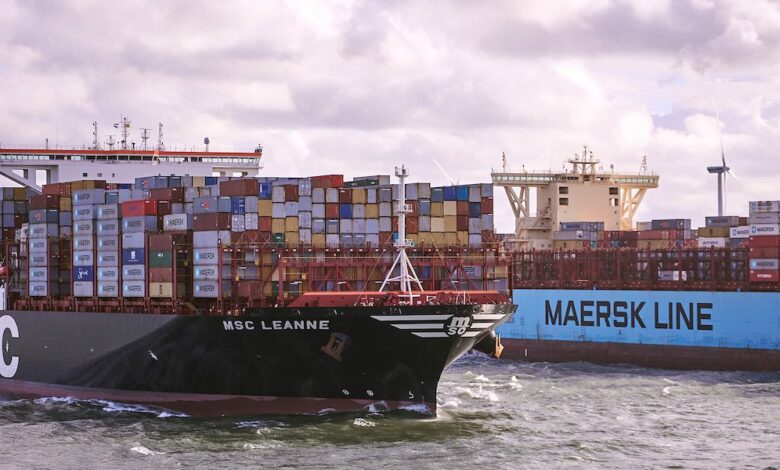Containerships moving at all-time low speeds

Container shipping has been relying on one of its top tricks in its playbook to rein in the worst of the markets by going super slow.
According to Clarksons Research, the container fleet moved at all-time slow speeds in Q1, with analysis from BIMCO suggesting that ships could go slower still.
During the covid pandemic liner operators increased the average sailing speed by up to 4% due to strong demand and widespread port congestion. Today, the situation is very different and in the first quarter of 2023 the average sailing speed slowed to 13.8 knots, down 4% year-on-year, with BIMCO suggesting this speed could drop by 10% before 2025.
Jan Tiedemann, an analyst with Alphaliner, confirmed that liner services had been slowing down, partly to absorb capacity that would otherwise be surplus. Nevertheless, in recent weeks, in line with falling bunker prices, there has been a slight uptick in the average speed of the global liner fleet, according to the latest data from Alphaliner.
Over the entire world box fleet in the last two years, average speeds went down by about one knot, according to Alphaliner data.
“That does not sound like much, but from a 16.5 knot global average, that is about 6% slower meaning, you need X% more tonnage to carry the same cargo volume,” Tiedemann told Splash.
“The slowing down of services is a well-used tool in the carriers’ toolbox. For the past couple of decades we have seen this used whenever there is either structural overcapacity or high fuel prices – or both. Presently the industry is facing both issues,” explained Lars Jensen, the founder of container consultancy Vespucci Maritime.
Significant amounts of new capacity are being delivered into a market with sluggish demand growth.
At the same time, Jensen pointed out that new environmental regulations as well as coming carbon taxes have the same impact as increasing fuel prices.
The record avalanche of newbuilds coming from yards in Asia are being injected into services, which are moving slower and slower.
Maersk and MSC, for instance, announced this month they would be injecting nine additional vessels into the Asia-Europe trade, while at the same time adding that these services would be moving up to three days slower than before, thus absorbing all the new capacity.
With liners expecting challenging conditions to persist for a significant amount of time thanks to sluggish demand, and an extraordinary orderbook to deliver, carriers have been adjusting their fleets to go slower. South Korea’s HMM, for instance, announced last month a decision to replace the propellers of six containerships with more efficient ones specially designed for slow steaming.
The transition to new fuels such as LNG, methanol and ammonia also favours slow speeds, since these fuels will be much more expensive than current ones, observed Tiedemann from Alphaliner.
“This shifts the capital cost / bunker cost balance, so that it makes sense to deploy extra ships but save fuel,” he explained.
Following record profits throughout the pandemic, liner shipping’s fortunes have been on the slide for the last 11 months. Israel’s ZIM and Taiwan’s Wan Hai became the first large liners to post a quarterly loss since 2020 this month. Overall, however, the slow streaming kept the red tide at bay for most carriers with John McCown, the head of Blue Alpha Capital, reporting on Friday that the container shipping industry made a net income of $13bn in Q1.

